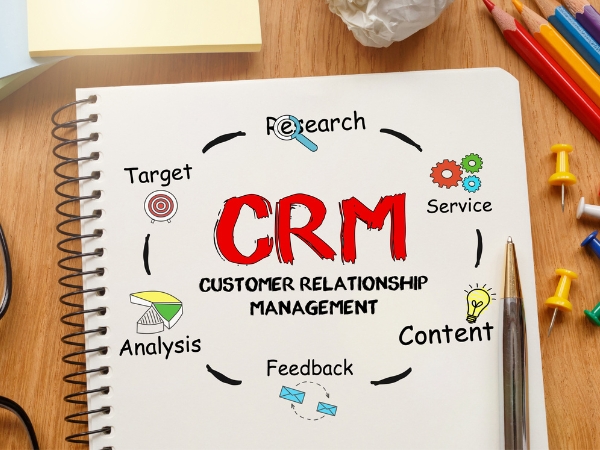What is lead in CRM?
Ever tried to navigate the bustling cityscape of CRM and got lost at ‘lead’? Well, not anymore! Put on your explorer hats as we take you on a thrilling journey to unravel this riddle!
What is a lead?
A ‘lead’ in the land of CRM is an individual or even a company that shows potential to become your customer.
Intriguing, right? CRM software systems act as magnets attracting such potential customers, also known as leads. But not all leads are created equal. In fact, there are different categories. Let’s see those…

The many faces of leads
Just as a chameleon changes its colors, a lead too wears different hues, based on their level of interest and interaction with your product.
Let’s meet them!
- A ‘warm’ lead is someone who has shown interest in your product. Picture this: they’re like visitors at a fair, warming their hands over the fire, intrigued by what’s on display.
- A ‘hot’ lead. This is a lead who’s braved the flames and shown intent to purchase your product. Keep an eye on those leads as they’re almost ready to jump into your shopping cart!
- Junk leads. Despite their shiny appearances, these are the ones who can’t or won’t buy your product. It’s like mistaking fool’s gold for the real deal!
Now you know what a lead is and what the different types of lead are. But be careful not to confuse them with other close notions.
Also read : Deciphering CRM terminology: Let’s crack the code together!
The metamorphosis: Lead vs deal vs customer vs opportunity in CRM
The world of CRM is populated by terms like lead, deal, opportunity and customer. But how do they differ? With a little magic dust of clarity, let’s demystify this puzzle!
- A lead is like a seed that has could grow into a plant but hasn’t been planted yet. It’s a person or company that has shown interest, but not yet started doing business with you.
- A deal, on the other hand, is like a sapling that has started to grow. It represents a formal agreement between you (the seller) and the lead (potential buyer), but hasn’t borne fruits yet.
- An opportunity? Now that’s when the sapling grows into a tree, the buds start appearing indicating potential fruit. It’s sales speak for a lead that believes your product or service can solve their problem.
- Finally, a customer is when that tree bears fruit – these are leads who’ve made the journey down the sales funnel, and are doing business with you.
How to turn a lead into a customer?
Turning a lead into a customer is like nurturing a seed into a fruitful tree. It requires patience, care and the right strategies.
So, how exactly can one do that? Let’s find out!
- To start with, you must generate (find) leads. It’s like a treasure hunt where the treasure is new customers in the bustling marketplace! By hooking these leads into CRM, they transform into promising opportunities and contacts.
Think of it as a magical metamorphosis from potential to profit. Leads are sourced from various places like social media, referrals or even email newsletters.
But beware! Not all are genuine. Here’s where your sales team enters the picture, like detectives solving a mystery to ensure these leads have potential.
- Then you have to ‘qualify’ the leads entered into the CRM. Think of it as a gardener selecting the best seeds to plant. You consider factors such as:
- Their level of interest
- Budget
- And company size
- Then comes ‘nurturing‘. This involves building a healthy relationship with your leads. Regular engagement, updates about the product or even offering valuable content helps.
- The final step is ‘conversion‘. This is when a lead decides to buy your product or service and turns into a customer.
The importance of leads in CRM
Leads are like the lifeblood for CRMs – without them, your business will not thrive. They ensure demand for your products or services continues flowing, aiding in capital growth and network expansion.
Effective generation and management of leads can significantly boost sales and revenue. It also allows you to focus on prospects who have shown initial interest, thus avoiding wastage of resources.
Monitoring and analyzing these leads helps to understand consumer behavior better. This invaluable insight lets you make vital improvements to your product offering.

Keep in mind, considering only 56% of B2B companies verify leads before passing them on to the sales department, it’s essential to forecast the potential of a lead accurately. This increases conversion rates and optimizes your sales process.
So, in a nutshell, leads are the starting point of your sales journey – an exciting road trip on the route to revenue!
Also read : 8 unmissable lead management software for small businesses in 2023
Leads in CRM: the essentials
In conclusion, a lead in CRM refers to an individual or company showing potential to become a customer. They are sourced from various places and need to be qualified for their potential. The aim is then to convert these leads into customers by building strong relationships with them.
In short:
- A CRM is software used to capture and nurture leads and manage customer relationships
- Leads are potential customers.
- They need to be qualified based on their potential
- Lead generation is an important aspect of running a business
- The goal is to convert these leads into customers
- Efficient management of leads boosts sales and revenue
Mastering the art of handling leads can take you a long way in controlling the reins of success in the business world. So here’s wishing you luck as you step onto this exciting journey! After all, every lead you handle brings you one step closer to making another customer happy!